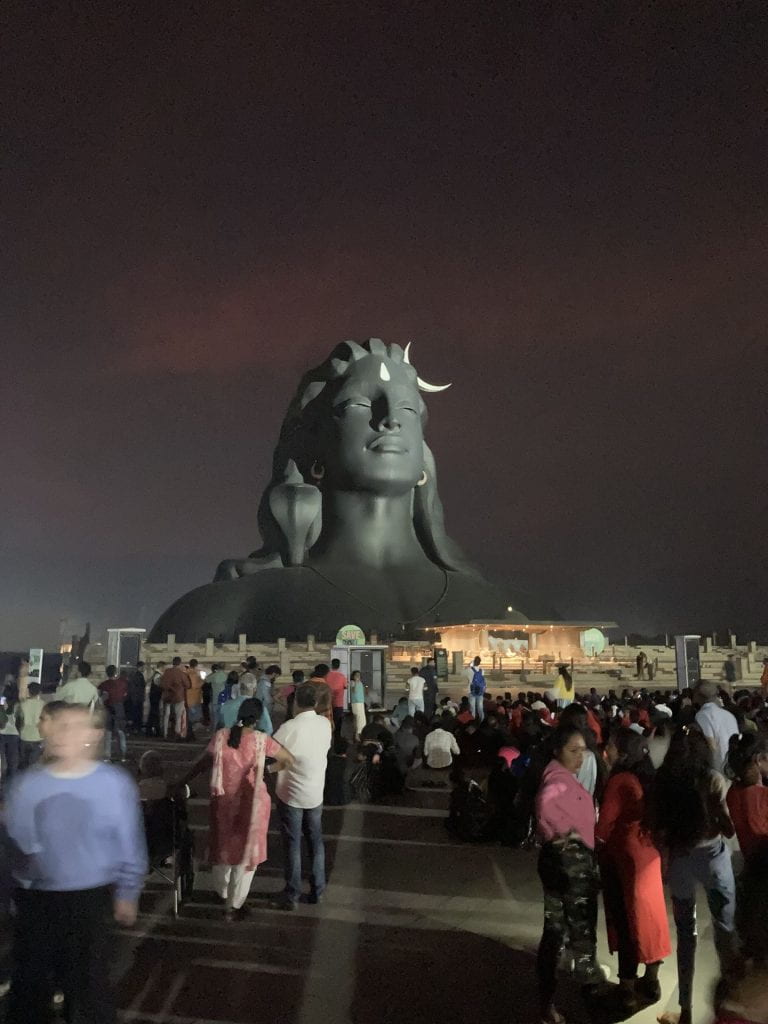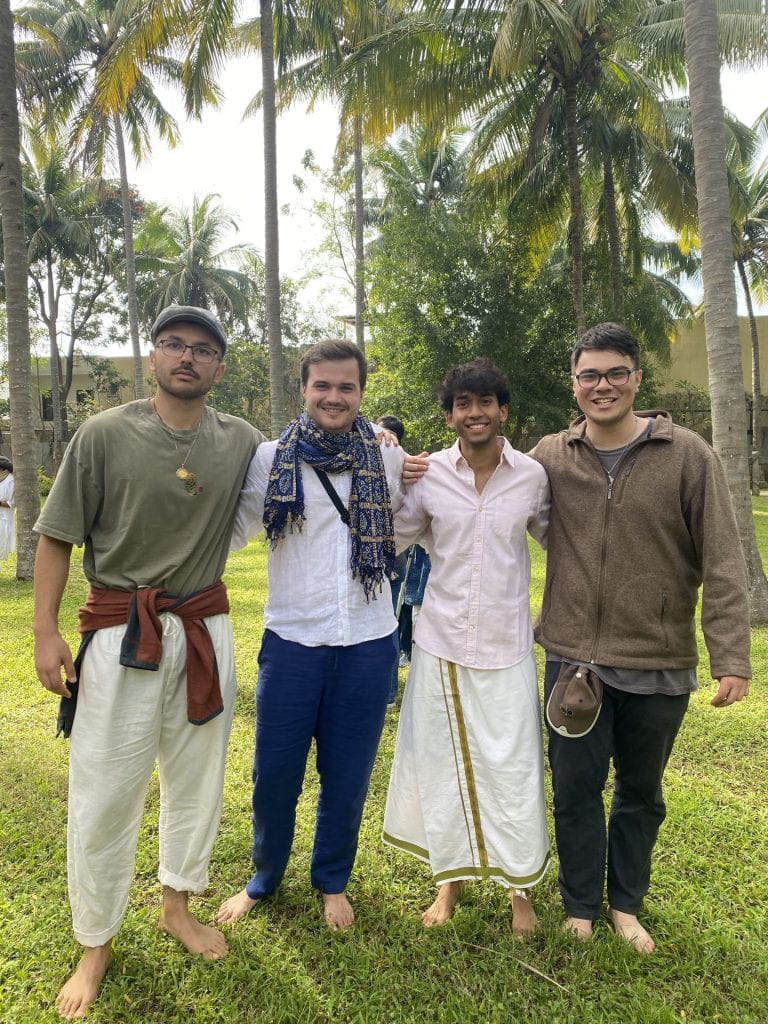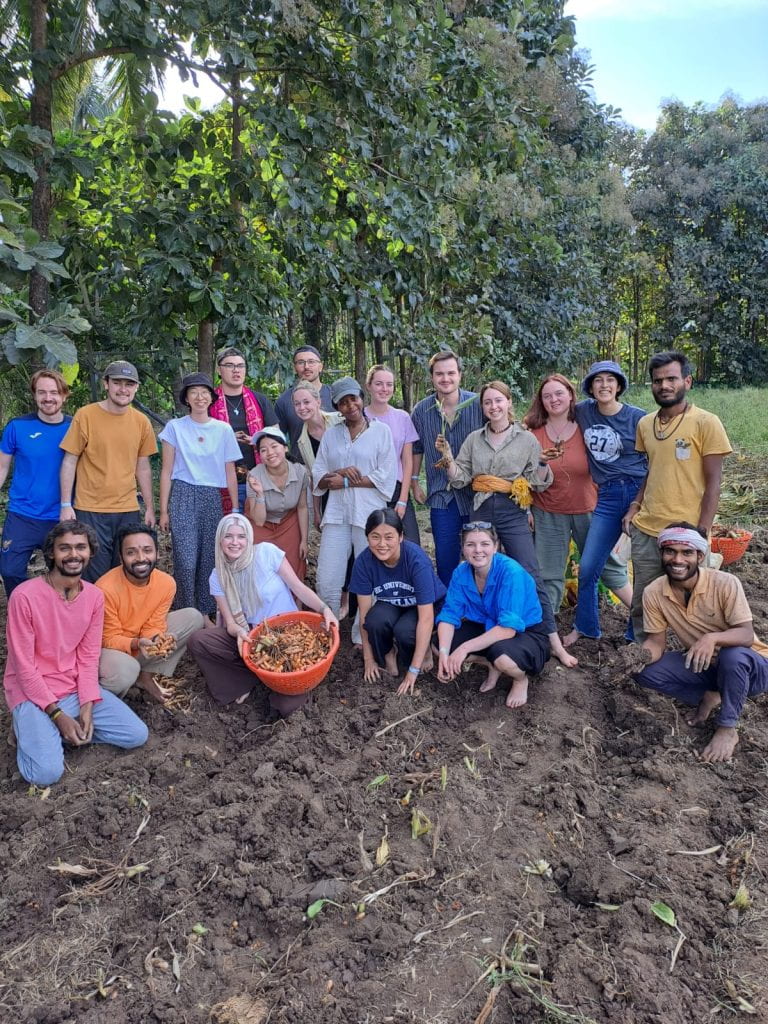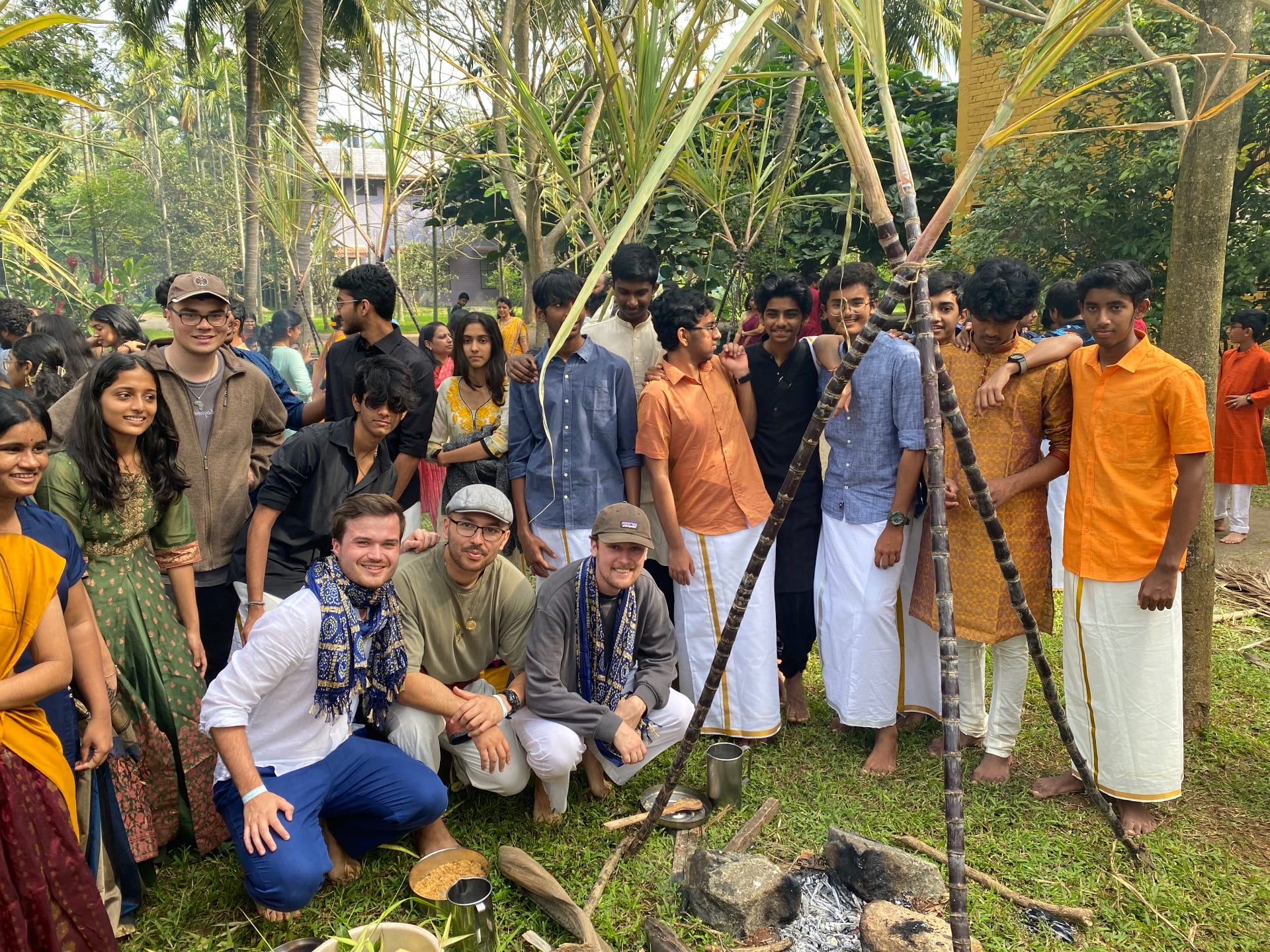I have been reflecting on some of my childhood memories, particularly ones when I was a bit of a headache for Mum and Dad. There were countless times when, Mum especially, would have to tell me to stop picking different things off the ground from the pavement. “You don’t know where it’s been”, was a classic counter-argument to keeping the long tree branch that I had just found, or the buttons that were sitting on the side of the road. I did not think it would be India’s spiritual landscape, and the amount of places I’d be walking barefoot, that would be the antidote to Mum’s parenting.
The spiritual landscape in India is huge. I’d argue it is the bedrock of this gigantic country. We have been privileged to experience many different forms of that spirituality while we’ve been touring the country. To date, we’ve been to a Ganesh Temple, two Ashrams, the Matrimandir in Auroville, the Isha Yoga Foundation in Coimbatore, and had countless group sessions of yoga and meditation. The Isha Foundation and its guru, Sadhguru, are well known in many parts of the world. Sadhguru’s YouTube channel has over 11 million subscribers, showing guided videos for yoga, meditation and improving mental well-being. His philosophy of trying to push yoga out to the world has created a commercialised spirituality around yoga and wholeness within one’s self.

We spent two full days at the Ashram, taking part in different spiritual practices with the devotees who spend months or even years following spiritual rhythms. We ate with devotees in silence, while seated on the floor and using our hands as utensils, dipped into cold water to cleanse ourselves, and spent hours sat crossed legged in exercises of devotion and meditation.
What struck me most was the amount of times we removed our shoes, and how helpful I found that to connect with the Ashram and the people. Unless we were moving from place to place, our shoes were off. I first found it very vulnerable. I never thought being barefoot in India would be the smartest decision in the world. Particularly as we’re so used to shoes, the soles of our feet are often quite sensitive and vulnerable to whatever hidden elements and objects are on the ground.
However, I found this practice great. My feet were directly in contact with the ground. For many religions here, entering a temple means you are entering a place of direct contact with God. Removing your shoes removes the dirt you carry, and directly connects you to the sacred ground that you are about to enter. It also puts everyone on equal footing, not making anyone any greater not lesser than another.

As our time in the Ashram went on, I realised this significance. While I felt alien to the environment we were in, I was welcomed alongside everyone else to eat and practice in the centre. I felt deeply connected to the ground and the people around me, as well all felt the same vibrations from the spiritual campus. We were all present to find our divine selves, whatever that looked like for each of us.
Through all of this, my feet have gotten incredibly dirty. My soles have touched all types of material imaginable, and have always needed a clean at the end of each day. At one point we were asked to remove our shoes as we entered a field to help harvest turmeric for the cooks. A slightly nervous experience, as we saw red ants, beetles and centipedes crawl around and over our feet, but the feeling of connecting to the land and the soil alongside other Indian farmers brought together a sense of shared connection to this great place.

As we left, I felt grounded. The honeymoon period of traveling was definitely over, but so was the feeling of isolation and loneliness living in a land nearly 13,000 kilometres north away from home. A step of vulnerability has helped accustom all of us to the amazing country we are just beginning to understand.
